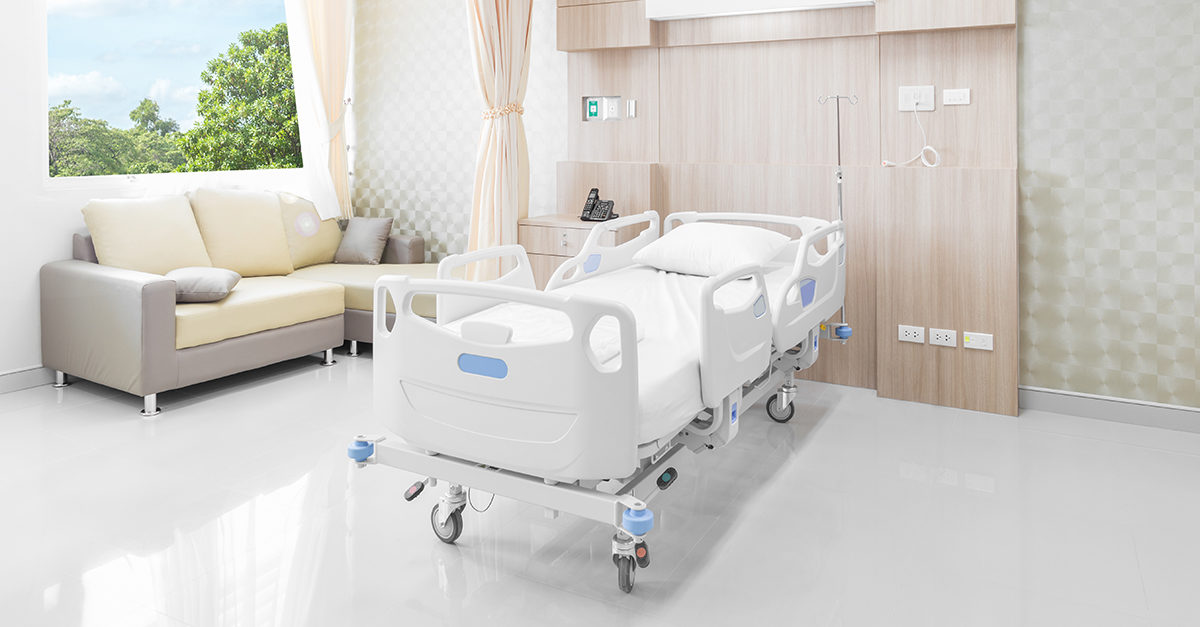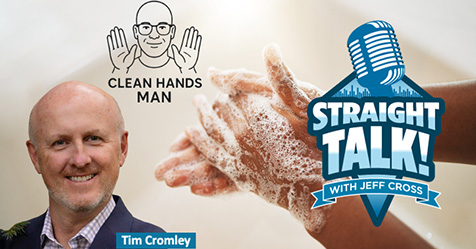In this era of increasingly resistant superbugs, hospitals and other facilities are struggling to effectively combat health care-acquired infections (HAIs).
Adding to this struggle, Medicare is scrutinizing facilities and fining them for failing to control HAIs. Many health care workers, from environmental services (EVS) staff to financial executives, will be facing this dilemma in the coming years.
On any given day, about one in 31 hospital patients has at least one health care-associated infection, according to the U.S. Centers for Disease Control and Prevention (CDC). With superbugs such a pervasive, expensive, and potentially dangerous problem, what can facilities do to fight them?
UV systems for disinfection
The solution may be found in ultraviolet (UV) ray systems. The concept of UV systems has been circulating since 1881 and they have been used in operating rooms and water treatment plants since the 1970s. These systems have recently become popular as a method to disinfect patient wounds as well as common areas in health care facilities. But how effective are they at reducing HAIs?
At the Jewish Home and Care Center in Milwaukee, we, the staff, realized a significant reduction in HAIs after purchasing a UV-C system—a system that uses short-wavelength UV light to disinfect. Across the board, the number of infections in our resident population dropped dramatically. As a bonus, the cost reduction from fewer resident infections allowed us to pay for the UV system in 18 months. Now that is cost effective!
The system we used effectively killed Clostridiodes difficile (C. diff), norovirus, influenza viruses, vancomycin-resistant enterococci (VRE), and Staphylococcus bacteria. We selected the UV-C system because it doesn’t damage the ozone layer, making it environmentally friendly, and it can disinfect in five to 10 minutes, whereas other systems require 25 to 40 minutes.
The benefits offset the costs
For the UV system to be effective, trained, dedicated individuals must operate it. However, the cost savings generated from reducing the number of HAIs and from eliminating the need for additional nursing staff to care for patients with HAIs negates the extra cost of having staff dedicated to the UV equipment.
To be perfectly clear, the UV-C system will never replace conventional cleaning. The physical removal of visible dirt will always be necessary. Physical cleaning, however, has only a 75% kill rate for germs. UV systems have a 99% kill rate when used in terminally cleaned rooms.
Set up a disinfection process
After completing the conventional terminal cleaning of a room, begin the protocol for the UV-C system robot. First, remove the window curtains and privacy curtains and place them in the laundry. Then, remove pictures from the walls and open all drawers. Televisions can stay where they are—tests have shown that there is no danger in them remaining.
For private rooms, place the robot in the main room first, then in the restroom. The entire disinfection process takes 10 to 15 minutes. For a semiprivate room, the process takes an additional five minutes, allowing time to place the robot in two areas of the main room.
The robot will not begin the disinfection process until 15 seconds after you turn it on, giving staff plenty of time to exit the room. Staff and residents always remain outside the room being disinfected and the robot immediately shuts down if it senses any movement.
Monitor the UV system’s effectiveness
Assess the effectiveness of the UV system using an ATP meter—a tool that measures the level of adenosine triphosphate, an organic compound found in living cells. One hour after treatment, test the room for the kill rate. Generally, we see kill rates of 95% to 99%.
Combining physical cleaning and the UV-C system is the best way to ensure that patient rooms and common areas are free of germs. Using a UV-C system daily is the key to reducing infectious germs.
In 2016, Dr. Christine Kovach of the University of Wisconsin-Milwaukee conducted a study that evaluated the use of UV disinfection to decrease infection-control burden in a nursing home setting. She compared 36 months of pretest infection control data with one year of post-test data in areas where the UV disinfection system was used.
Monitoring the subsequent infection rates, she found a significant decrease in the overall number of infections, including those relating to the urinary tract, respiratory tract, and skin and soft tissue, as well as instances of pneumonia. The reduced infection rates produced a corresponding drop in hospitalization rates.
These findings, along with the positive results the Jewish Home and Care Center of Milwaukee sees to this day, are proof that the UV-C system, combined with conventional cleaning, can help facilities combat HAIs.




